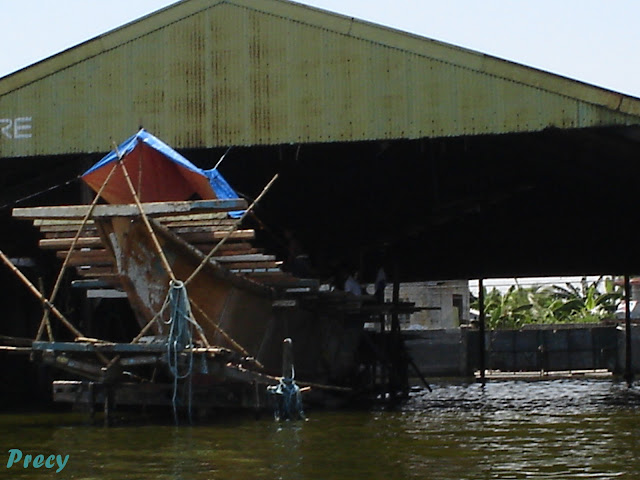You can't miss it. Along España Boulevard (on your left going north) is a big campus that looks like it has been there for ages. The school itself was founded in the 1611 but the campus was originally in Intramuros. The move to this place took place in 1927.

What catches the eye is the landmark, the Arch of the Centuries. When the UST moved to España, the arch was dismantled and carried piece by piece from Intramuros. It was put together in what used to be the main entrance of the University (when I was little, the road going through the arch was the main entrance to the University). The original arch was destroyed during WWII so this one is a reproduction.
 |
| The Arch of the Centuries |
The arch is flanked by the Fountain of Divine Wisdom (the one below) and the Fountain of Knowledge.
 |
| The Fountain of Divine Wisdom |
The UST chapel (actually a parish now - the Santissimo Rosario Parish) is part of the Father's Residence and the building that houses the UST Central Seminary, and the UST Ecclesiastical Faculties. It was built in 1933, in the art deco style (in the 20's to the 30's, this must have been the "in" thing in architecture). The Metropolitan theater near the Liwasang Bonifacio is an example (a more illustrative one) of this form of architecture.
 |
| The UST Chapel |
The chapel has traditional plan, The north transept (the Lady Chapel) is where Our Lady of the Rosary is enshrined. St Dominic stands solemnly on the South transept.
The Chapel is air conditioned during Mass. I find the traditional layout very solemn and prayerful. My own parish is a circular church and it is very airy and comfortable. But it gives the impression of being a place where people can move around a lot - and people do! Hmmm.
Um, I didn't find an image of St. Thomas Aquinas inside. Can anybody tell me why!
 |
| The interior of the UST Chapel |
The Main Building was built in 1927 in the Renaissance Revival Style. It has a wide staircase leading to the rooms and offices upstairs. When I was a student, I remember going to the UST for seminars and competitions in this building. Somewhere in it are bottles where biological specimens were preserved. I've always felt that there was something about his building - a life that started way back....and it was not in the bottles. It was used by the Japanese during World war II as an Internment camp. But seeing students walking around it today, you wouldn't guess that it was a place of much suffering in the past.











